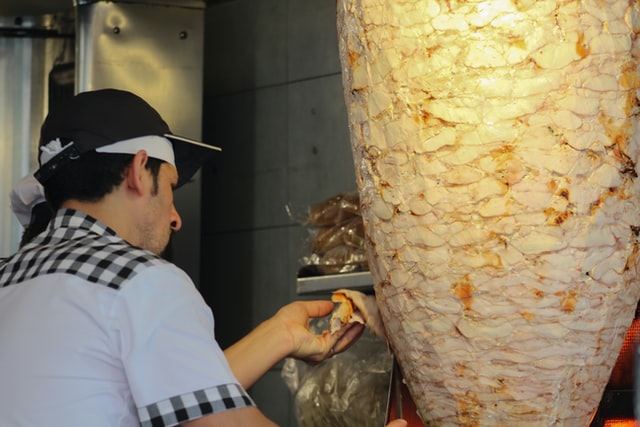
About Gyro
The first mention of Kebab, which first showed up in Ottoman text as early as the 1700's, simply referred to stacked and grilled meat. Skipping ahead a few years, Armenian and Greek refugees fleeing persecution from the Turkish Independence and the Armenian Genocide and seeking asylum in Greece (1918-1923) brought the idea across the border with them, and the easy to make sandwich started popping up in food stalls on every corner. 15 years later with American boots hitting the soils in Greece due to our involvement in WWII, the Greek version of the Gyro starting finding its way into the bellies of American soldiers. It is said that the concept of the gyro in America, just like the pizza, was popularized by returning soldiers who craved a taste of the delicious sandwich they had abroad. The American bastardization of the meat began in the 1970's in Chicago with a couple different Greek (and one Jewish) entrepreneurs all starting their own commercialized rotisserie cooking processes for a new meat amalgamation that was ground and formed instead of stacked whole muscle. The idea quickly took off and now, one company alone, KRONOS, can produce enough gyro meat in one day for 600,000 sandwiches. So what's up with the name? We've all heard it pronounced a hundred ways.. well the middle of the road, without any regional accent or dialect, way to pronounce the popular sandwich is: "Yee-ro(s)". And one last fun fact - there are three sandwiches in the region that are all basically the same thing. Turkey, Greece, and the Arab Middle East all have a grilled and thinly sliced meat sandwich with one common theme:
(Turkish) Doner, (Greek) Gyro, and (Middle Eastern; Arabic) Shawarma all mean "TURN". (It is said that changing the name to "gyro" in Greece was a way to remove any remaining Turkish influence on the Greek language.)
